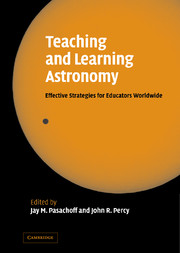The Ever-Changing Sky
The Ever-Changing Sky provides a comprehensive and non-mathematical guide to spherical astronomy. The reader is guided through terrestrial and celestial co-ordinate systems, time measurement and celestial navigation, to the prediction of the rising and setting of the stars, Sun and Moon. It focuses on the geometrical aspects of the night sky without using complex trigonometry. The book progresses to a general study of the Earth and sky, including the stars and constellations (with useful star maps provided), the motions and appearance of the Moon, tides and eclipses, the orbits of the planets and the smaller bodies of the Solar System (asteroids, meteors, meteorites and comets). Finally, there is a brief overview of atmospheric phenomena (including rainbows and haloes). This text will be invaluable to students taking courses in naked-eye astronomy, amateur and professional astronomers, as well as more general readers wanting to know how the night sky changes.
- Comprehensive and uniquely non-mathematical guide
- Detailed discussions of the stars and constellations, with handy star charts
- Appendix with a useful, compact introduction to spherical trigonometry; and graphs that allow the reader to calculate the times of sunrise and sunset anywhere on the Earth
- Well known and successful author
Reviews & endorsements
'To write a book about spherical astronomy without confusing the non-specialist is far from easy; to do so without using any but the most elementary mathematics is indeed a daunting task. James Kaler has tackled the problem head-on, and has achieved a notable success … All in all this is a fine book which fills a notable gap in the literature. It may be recommended without the slightest reservation.' Patrick Moore, The Observatory
'… if you are looking for a good grounding in basic astronomy then look no further - The Ever-Changing Sky is the book for you! I only wish I had had it when I was trying to get a clear understanding of the celestial sphere fifty years ago.' Gordon E. Yaylor, Astronomy Now
'For all seriously interested in astronomy a good grounding in this subject is essential but in the past, due to its mathematical nature, this subject has been closed to many. Now, however, Kaler's book presents the entire subject in easy non-mathematical terms and he is to be congratulated for this achievement.' Irish Astronomical Journal
'… a complete non-mathematical treatment of all aspects of the sky … it contains many very interesting facts and figures which are certainly not to be found in the average present day book on popular astronomy.' Henry Hatfield, Journal of the British Astronomical Association
'Those non-mathematical readers who really want to understand the intricacies of phenomena such as the rising and setting stars, tides and timekeeping, calendars and constellations, planetary paths and eclipses need look no further than the superbly illustrated The Ever-Changing Sky.' New Scientist
Product details
June 2002Paperback
9780521499187
516 pages
247 × 176 × 28 mm
1.149kg
310 b/w illus. 57 tables
Available
Table of Contents
- Preface
- 1. The Earth and the celestial sphere
- 2. The moving Earth and the travelling observer
- 3. The orbital motion of the Earth
- 4. Stars and constellations
- 5. Precession, nutation, and aberration
- 6. Time
- 7. Sunrise and sunset
- 8. Positions in the sky and on Earth
- 9. The Moon
- 10. Tides, eclipses, and calendars
- 11. The planets
- 12. The small bodies of the solar system
- 13. Light and atmosphere
- Appendices: I. Graphs and tables
- II. Star maps
- III. Trigonometric relationships
- IV. Bibliography
- Index.









